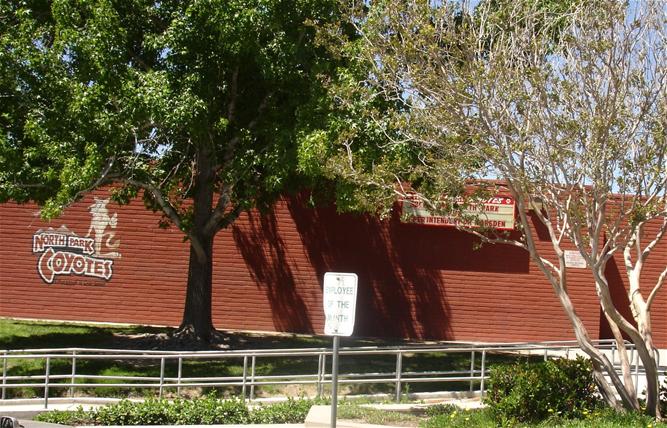San Bernardino City Unified School District cannot be held liable for the fatal shooting of a student and their teacher by the teacher’s estranged husband, the California Court of Appeal ruled Sept. 7.
Cedric Anderson had shot North Park Elementary School special education teacher Karen Smith, his wife, during class April 10, 2017. He also fatally shot a student and non-fatally shot a second student before killing himself.
Seven students with their guardians filed lawsuits against the school district Dec. 21, 2017, arguing the school had lax security policies that allowed Anderson on campus.
The school district has not yet responded to a request for comment.
San Bernardino Superior Court, and the Court of Appeal, both ruled that the district could not have foreseen that Anderson would have posed a danger to Smith.
The appellate ruling laid out the facts of the case:
Smith left Anderson after he accused her of infidelity. Smith did not file a police report, nor indicate to anyone, including school officials, that she was concerned for her safety or that she had left Anderson.
On the day of the shooting, Anderson told the school secretary he had something to drop off to Smith. He signed in at the front desk, then walked unattended to Smith’s classroom. Campus policy, according to the appellate ruling, required most visitors to be accompanied on campus, but allowed teacher’s spouses to visit their spouses unattended. Smith’s classroom opening was covered by a curtain instead of a door.
Attorneys for the students argued the school should have contacted Smith when Anderson arrived, told Anderson to leave whatever he had to drop off at the desk, accompany Anderson to Smith’s room, have an exit door for students to flee from and have a lockable door to Smith’s classroom.
“In the shooting case at North Park Elementary, the shooting could have been avoided but for multiple failures in security protocols,” attorney Hoanh Robinson said by email.
“This classroom, for Special Needs children, violated numerous security regulations of the district, the State, the building code etc. IT DID NOT HAVE A DOOR. Only curtains. So, there was no way for the teachers to prevent someone from entering the classroom without their permission,” Robinson wrote.
The case brought charges of negligence, negligence per se, breach of fiduciary duty, dangerous condition of property and responsibility for medical expenses.
The complaint includes assertions made by Smith’s daughter that Anderson threatened Smith with murder.
It said Anderson’s actions caused Smith to go into hiding in the weeks before the shooting, and that Anderson showed up at the school four days before the shooting and attempted to immobilize Smith’s car by attaching a bicycle to it.
The school should have also known about Anderson’s threats to Smith because Smith had told the school principal about her breakup, and likely told her about personal threats Anderson gave her, the plaintiffs claimed.
The day of the shooting, Anderson tried to enter the school through locked side gates before claiming to be dropping off Smith’s launch, the complaint claims.
The students and their guardians argued that they sustained injuries to their psychological health by witnessing the shooting.
Motions for summary judgment
The court threw out the students’ case against Smith’s estate Oct. 16, 2019, after San Bernardino Superior Judge Michael Sachs ruled that “Karen Smith neither knew our could have known that Cedric Anderson would engage in the type of attack at the North Park school which occurred here.
The school district argued that the case against them should also be thrown out, because if Smith did not know Anderson would attack her at school, there was no way the school could have known. They also argued that a “lack of” something on a property cannot constitute a “dangerous condition on property” under state law. The district’s motion said that Anderson did threaten to kill Smith before the shooting, but that he never threatened use a gun, or to harm Smith’s students. The school argued the threats were not real, imminent or considered legitimate by Smith, and that the threats were not communicated to district staff. The district also argued that case law established that a public organization could not be held liable for a murder on public property for not having a locked door. The district referenced the 2002 case Zelig v. County of Los Angeles, in which a man murdered his former wife in Los Angeles’ Stanley Mosk Courthouse. The California Supreme Court weighed in on that case, and ruled that a public organization can only be liable for an injury if they violate a law.
San Bernardino Superior Court granted the district’s motion for summary judgment Nov. 4, 2019. The students and their guardians appealed.
Appellate decision
The Court of Appeal ruled that the shooting was not foreseeable, and that the school could not be held responsible. The court decided that neither the school nor Smith knew Anderson would be a danger.
“(A) lockable door on Smith’s classroom would not have affected the risk of harm since Smith was unaware that Anderson posed a threat to her safety. Even if Smith’s classroom had a door, and that door was locked, there is no evidence that she would have refused to open the door to him.” the court ruled.
“If Smith feared Anderson, she would have filed a police report and informed her family and defendants of the gravity of the threat that he posed. She did neither,” the court continued. The court said the plaintiffs did not present any evidence saying Anderson attached the bike to Smith’s car, or that anyone in the school administration knew about the incident.
According to the Court of Appeal, it was undisputed that Anderson never threatened to shoot Smith, to harm her at her school or to harm any of her students. The Court found that Smith’s coworkers were unaware of her marriage issues, and that Smith’s daughter never suspected Anderson was abusive.
The court decided that a school district does not have a duty to ensure that its school is safe from every “trusted visitor,” like Anderson, who was known to the secretary as Smith’s husband. To impose that duty “would be entirely unfounded and unfair,” the court ruled.
“Maintaining the safety of the schools may also include posting security guards throughout campuses, installing metal detectors at every entrance onto school grounds, and installing video cameras inside and outside each classroom. The duty proposed by plaintiffs is skirting on absolute liability which, given the enhanced risk, would cause increased insurance premiums,” the court ruled.
“Public policy factors counsel against imposing a duty on school districts to ensure that students are safe from third party criminal conduct of known visitors—including teachers’ spouses, and students’ parents and family members. The extent of the burden to shoulder such a duty and the consequences to school personnel would be extremely heavy. Districts would become the insurers of the safety of students in the event of any intentional harm (including from within), even if the districts have no reason to expect it. This is an unrealistic responsibility. To avoid liability, schools would be compelled to undertake onerous and costly measures—such as inspecting every person who comes on campus for weapons and other safety hazards, vetting all visitors, teachers, and students, and monitoring their daily activities and the condition of classrooms at least during school hours,” the court ruled.
Robinson, the plaintiff’s attorney, argued the decision was inconsistent with case law, and was decided to protect the school district over the students.
“The dismissal was based upon a single judge’s decision that, despite the factual issues of negligence and legal precedents, this case was not allowed to go before a jury to decide whether there was negligence,” Robinson wrote.
Case information
Gordon Phillips Jr. of the Law Offices of Gordon Phillips Jr.; Hoanh Robinson of the Robinson Legal Center; Ricardo Perez of the Pérez Law Corp.; and Sharon Arkin of The Arkin Law Firm represented the plaintiffs.
Golnar Fozi, Daniel Modafferi and Gabriel Kontarovsky of Meyers Fozi & Dwork represented San Bernardino City Unified School District.
San Bernardino Superior Judge Lynn Poncin presided.
Case number CIVDS1725293.
Appellate case number E076212.
Read the complaint here.
Read the motion for summary judgment here.
Read the ruling here.
[/wlm_private]







